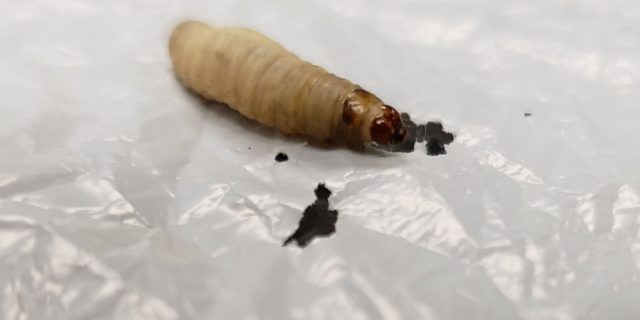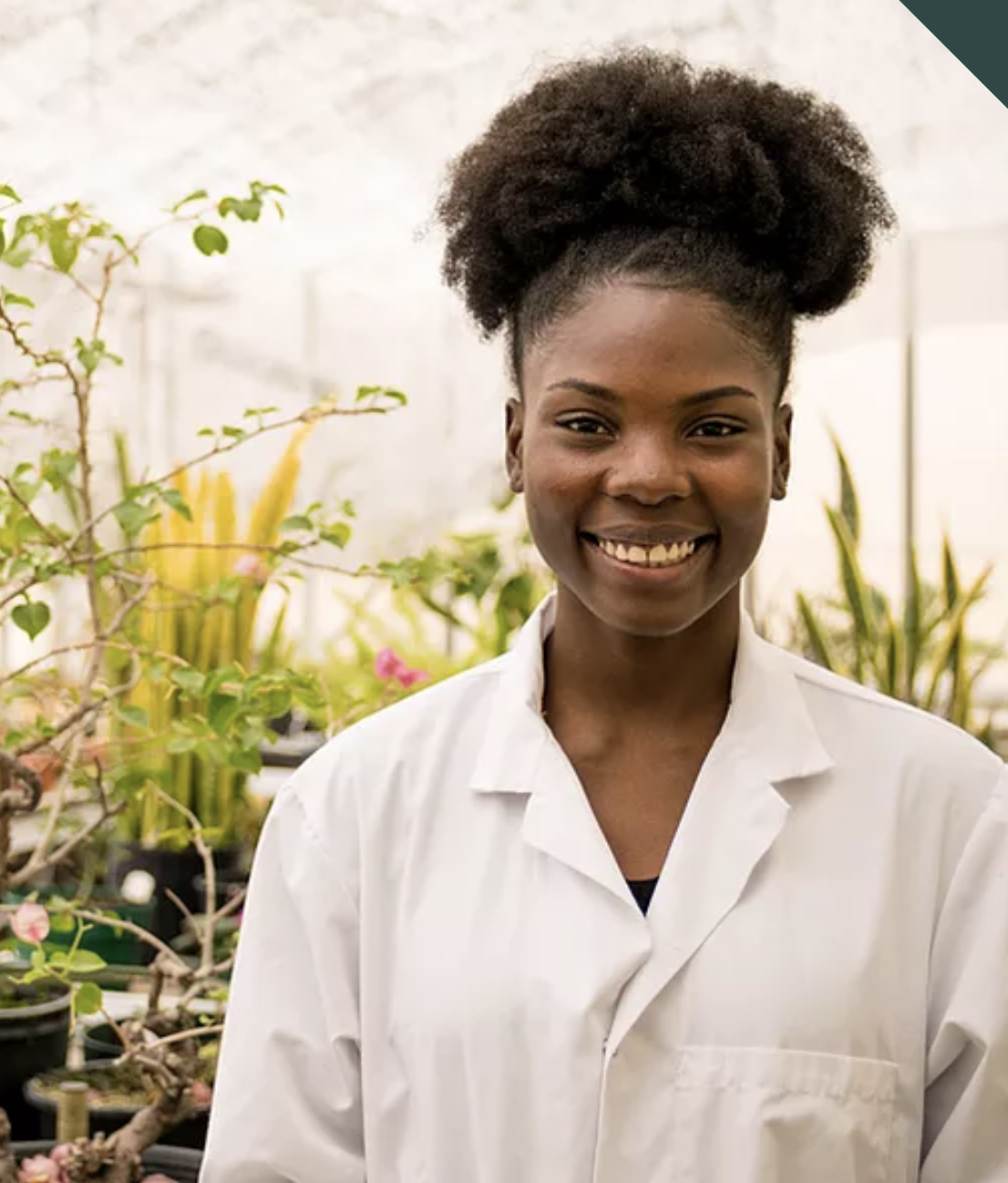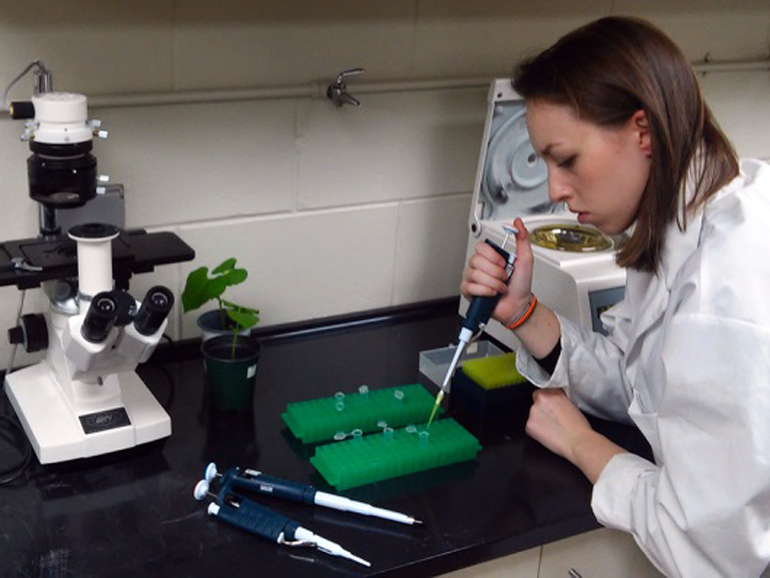
By
Harald Grove, Sachi Villanueva, Bryan Cassone, Christophe LeMoine, Oluwadara Elebute, and Charlotte Smith
March 2021
Print Version
What you need to know
Waxworms are the caterpillars of the greater wax moth, Galleria mellonella. These insects are common pests of apiaries and feed voraciously on honeycomb. Interestingly, they also voluntarily feed on polyethylene, a type of plastic commonly used in shopping bags. Because their natural diet of honeycomb is chemically similar to polyethylene, the waxworm may have evolved the necessary biochemical adaptations to degrade plastic wastes.
Why this research is important
Global plastic production continues to increase due to the demand for cheap, durable, and versatile materials. However, these characteristics make plastic resist degradation leading to accumulation in landfills and marine ecosystems, negatively affecting our environment. As a solution, research has focused on identifying microorganisms like bacteria and fungi capable of plastic biodegradation. When isolated, these microorganisms can biodegrade plastics, albeit very slowly. However, when a waxworm with an intact intestinal microbial community (microbiome) consumes plastic, the biodegradation process is expedited. Our research solidifies the essential partnership between the waxworm and its microbiome to allow for polyethylene break-down and provides an additional research avenue to develop new methods of plastic bioremediation.
How this research was conducted
We fed waxworms polyethylene instead of their honeycomb diet for several days. As the larvae devoured the plastic sheet, their excretions changed and became more liquid, indicating the presence of a different chemical waste. As one potential biodegradative product is a glycol, we biochemically tested its presence in the excreta. Next, we analyzed the microbiome by treating the caterpillars with antibiotics to reduce their intestinal bacteria and then measured the amount of glycol excreted. Additionally, we harvested and grew bacteria from the waxworm gut while selecting for species capable of using polyethylene as a sole carbon source. We then extracted the bacterial DNA for sequencing and species identification.
To test for the involvement of the host in plastic degradation, waxworms were either fed on their natural honeycomb diet, polyethylene sheets, or were starved for up to 72 hours. We then used RNA sequencing (transcriptome) analysis to assess global changes in gut gene expression on these diets and looked for unique categories related to metabolism. Finally, we measured total larval fat quantities to learn the consequence of polyethylene degradation on energy stores.
What the researchers found
The change in excreta that accompanied the transition from a honeycomb to polyethylene diet indicated excretion of glycol that decreased when larvae were fed antibiotics. Additionally, polyethylene-fed waxworms had the highest microbial abundance of all three diets, showing that gut bacteria were important for biodegradation. Further, we identified an Acinetobacter species of gut bacteria that survived on polyethylene in culture for over a year. Overall, our results showed the gut microbiome plays an integral role in polyethylene degradation.
Gene expression of the waxworm host revealed that many digestive processes of honeycomb-fed caterpillars were similar in polyethylene-fed larvae suggesting normal intestinal function on a plastic diet. Polyethylene-fed larvae also showed a unique gene expression profile with an increased capacity for fat metabolism. Interestingly, a direct measurement of fat quantities also showed increased fat retention in polyethylene-fed larvae. This demonstrates that the wax moth larva also plays a role in polyethylene degradation in synergy with their microbiome. While their normal metabolism is geared towards deriving energy from bulky wax comb hydrocarbons, these pathways can be co-opted for the degradation of synthetic polymers like polyethylene.
How this research can be used
This research provides evidence that aspects of microbial and animal metabolism work together during polyethylene degradation. Enzymes from the animal and resident gut bacteria may be combined to develop a technology that may be used to degrade our plastic waste in the future. Further research should look at identifying and exploiting the enzymatic machinery involved in this pathway.
About the Researchers
Keywords
- biodegradation
- metabolism
- microbiome
- transcriptome
Publications Based on the Research
Cassone, B. J., Grove, H. C., Elebute, O., Villanueva, S. M. P., & LeMoine, C. M. R. (2020). Role of the intestinal microbiome in low-density polyethylene degradation by caterpillar larvae of the greater wax moth, Galleria mellonella. The Royal Society, 287(1922). http://dx.doi.org/10.1098/rspb.2020.0112
LeMoine, C. M. R., Grove, H.C., Smith, C.M., & Cassone, B.J. (2020). A very hungry caterpillar: Polyethylene metabolism and lipid homeostasis in larvae of the greater wax moth (Galleria mellonella). Environmental Science and Technology, 54(22), 14706–14715. http://dx.doi.org/https://doi.org/10.1021/acs.est.0c04386
Editor: Christiane Ramsey
Read more BU Research
Research at Brandon University follows comprehensive policies designed to safeguard ethics, to ensure academic integrity, to protect human and animal welfare and to prevent conflicts of interest.





